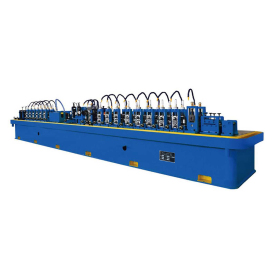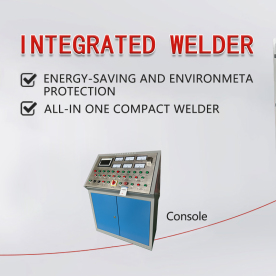[High frequency welder price]Exploring the Current Market Trends and Factors Influencing High Frequency Welder Price in 2023
News 2024-8-14

Exploring the Current Market Trends and Factors Influencing High Frequency Welder Price in 2023

Exploring the Current Market Trends and Factors Influencing High Frequency Welder Price in 2023
What is High Frequency Welding?
High frequency welding is a specific type of resistance welding that generates heat through electrical resistance. This process is often used for welding thin-walled pipes, sheets, and tubes made from both ferrous and non-ferrous materials. High frequency welders are valued for their quick and efficient production capabilities. They can effectively join materials without the need for additional filler materials, resulting in clean and strong joints.
Understanding High Frequency Welder Price Components
Several factors influence the price of high frequency welders, impacting both the initial investment and ongoing operational costs:
1. **Type of Equipment**: The price can vary significantly based on the specifications of the welder. Basic models typically cost less than advanced machines featuring automated technologies, digital controls, or enhanced safety features. For instance, an entry-level high frequency welder might range from $5,000 to $15,000, while high-end models can exceed $50,000 depending on their capabilities.
2. **Brand and Manufacturer**: Reputation and reliability play a significant role in pricing. Established brands with a history of producing durable and effective machines often charge a premium. However, investing in well-regarded brands can lead to long-term savings due to lower maintenance and repair costs.
3. **Material Compatibility**: The ability of a welder to handle various materials will also impact its price. High frequency welders capable of working with multiple material types, including advanced alloys and composites, generally cost more. The demand for welders that can efficiently manage diverse materials is increasing in various sectors, driving up prices.
4. **Market Demand**: Global economic conditions influence the market for high frequency welders. During periods of economic growth, the demand for manufacturing and construction rises, which can increase prices. Conversely, an economic downturn may lead to decreased prices due to reduced demand.
5. **Technological Advancements**: As technology progresses, features such as automation, advanced monitoring systems, and better energy efficiency become standard in newer models. These advancements often lead to higher prices but can significantly enhance productivity and reduce operational costs.
6. **Geographic Factors**: Prices can also vary based on location. Import and export tariffs, shipping costs, and local economic conditions can cause significant fluctuations in the price of high frequency welders.
Current Market Trends in High Frequency Welder Prices (2023)
In 2023, several trends have emerged that are reshaping the high frequency welder market:
- **Increase in Automation**: As industries increasingly adopt Industry 4.0 principles, there is a growing demand for automated welding machines. These systems can significantly reduce labor costs and improve welding precision. Consequently, high-frequency welders that incorporate automation features are typically priced higher.
- **Sustainability Focus**: Manufacturers are looking for welders that minimize energy consumption and waste. High frequency welders with enhanced energy efficiency are gaining popularity, despite their higher initial costs, as they translate to long-term savings in operational costs.
- **Supply Chain Challenges**: Global supply chain disruptions have affected the availability of components required for high frequency welders. This has led to increased manufacturing costs, which are then passed on to consumers in the form of higher prices.

Exploring the Current Market Trends and Factors Influencing High Frequency Welder Price in 2023
Conclusion
Understanding the high frequency welder price and the factors influencing it is vital for stakeholders in manufacturing and construction industries. As technology continues to evolve and market dynamics shift, businesses must stay informed about pricing trends and invest wisely in equipment that enhances productivity and maintains high-quality standards. Whether you are looking for an entry-level machine or a sophisticated automated system, being aware of the various factors at play will help you make an informed decision and optimize your investment in high frequency welding technology.
